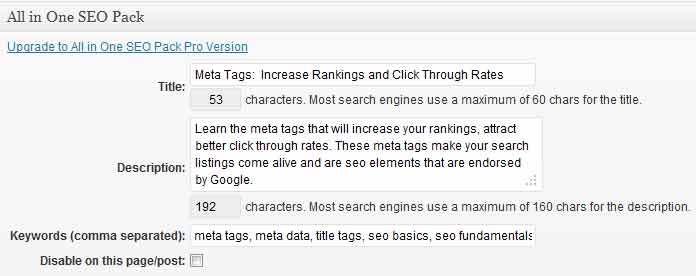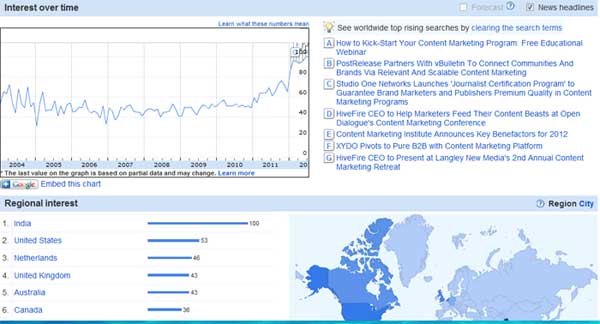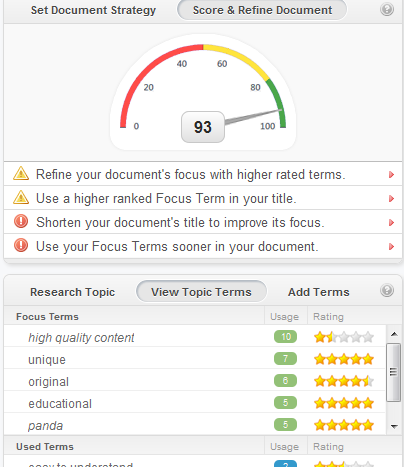Google’s Panda and Penguin updates shook up the the SEO community and more updates are on the way. In fact, according to Search Engine Roundtable, Matt Cutts said that the next few Penguin updates will be jarring and jolting for SEO’s. Cutts was speaking at a keynote address at SES, San Fransisco, on August 15, 2012.
Google Doesn’t Hate SEO
As he has in the past, Cutts pointed out that Google doesn’t hate SEO. The goal of SEO is to make websites more crawlable and faster. When SEO becomes an issue is when spam comes into play, such as if you go overboard buying links, doing comment spam links, or keyword stuffing.
The fact is that Google makes all these updates to ensure that search results are relevant to the user. Google is primarily interested in relevancy, context and quality of content. If you write your content primarily to attract your prospects while keeping search engines in mind so that they can easily index that content, you’ve created a win-win situation. As long as users find your content useful, easy to navigate, scan and understand you’ve made the job easy for both prospects and search engines.
Here are a few content guidelines that Google will not ignore since they entice the user, are relevant and contextual. They allow the user to quickly scan your copy and at the same time they allow search engines to efficiently index your content.
#1.Unique and Engaging Content
Prospects are automatically attracted to unique and original content. Posting unique and high quality content is also a seo strategy. It is the most important and effective way to receive good rankings for several reasons:
- When your content is unique, other sites will start linking to you. That’s automatic link building which is an essential seo strategy.
- The very reason Panda and Penguin were born were to eliminate spammy sites, duplicate content, obvious keyword stuffing and to reward original, high quality content. Posting unique and high quality content has been endorsed by Google and other search engines in all their seo guides.
- If your content is unique, people are bound to share. Most search engines account for social shares as an indicator of the quality of your site. Your social vote increases your visibility and the end result is higher rankings.
#2. Use of Proper Heading Tags
Headlines that engage the reader are instantly successful. They attract and entice your prospect to read the rest of your copy. Successful headlines allow you to tell your story in a few powerful words.
At the same time, heading tags help search engines determine the structure of your document. Seo best practices for headings include:
- Your H1 heading is your top level heading. It needs to inform search engines about the focus of your document.
- Use headings and sub headings only to define the structure of your document. Avoid using headings only for styling purposes and if they do not define the structure of your content.
- Use keywords in your headings, preferably, towards the beginning of your heading.
- The H1 heading is the top level heading and should be used only once in your document. H2-H6 are the lower level headings that help you organize your content. Use h2 and h3 headings according to the importance of the sub-topic.
#3. Anchor text and links
Anchor text helps the reader quickly find more pertinent, relevant info either on your site or on another relevant useful site.
Seo Best practices include:
- In the early days of the web, you could get away with anchor text such as: Click here for more info. These days you need to clearly define the purpose of your anchor text. Anchor text needs to be keyword rich. You also need to be subtle and sophisticated with your use of keywords. Use your keywords too many times and Google will think that you are a spammer. On the other hand, your anchor text also needs to inform search engines about the focus of your document. There’s just that fine balance that you need to strive for. Avoid keyword-stuffing and using the same keyword multiple times.
- Make it easy for users to distinguish between regular text and your anchor text.
#4. Internal links
Your prospects like internal links as it helps them better navigate your site. Try to create each page on your site and each post in your blog as a small part of a larger story and you will be able to help readers navigate through the whole story with an efficient use of internal links.
Not surprisingly,search engines also like internal links as it helps them understand the internal structure of your pages. Seo best practices include linking to only relevant content within the site structure.
#5. Images
Images instantly attract readers and are also attractive bait to lure a reader into reading your page.
Here are some seo best practices for images:
- Alt tags always allow a search engine to understand what your image is about.
- Avoid naming files with generic names such as: image1.jpg. Follow a naming convention that is relevant to each image ex: smallcat.jpg
- Store all images in a single directory. Search engines like this practice as it helps them understand the internal file structure.
- Use an image compression program such as smush.it to compress your images. The less space they occupy, the quicker your site will load.
- Provide search engines with an image sitemap file
- Always give attribution. According to the Google’s recent update, just last week, sites that don’t give attribution to any form of content will be penalized. This usually happens with images.
If you create unique, interesting, powerful content, follow these content guidelines and seo best practices you will attract prospects and search engines, build your brand and increase your exposure through improved rankings.
Do you have nay more content guidelines to add? Please share in the comments below. Thanks.
You May Also Like
7 Essential SEO Tools for All Content Writers
How to Use the Magic of Meta Tags to Improve Rankings
Google gets Picky Over Content with Panda




